About Bernardine King
Contact New Level Education
Build a world
Dyslexia is a challenge that inhibits people from learning to read and spell accurately and fluently. The predisposition to developmental dyslexia is present from birth, as it has genetic and neurological origins. In other words, dyslexia has physical causes.
Dyslexia is surprisingly common and often goes unrecognised when individuals with it are wrongly labelled as 'lazy' or 'unintelligent' or 'not academic'. The reasons why they are wrongly categorised in this way are social, not scientific or medical.
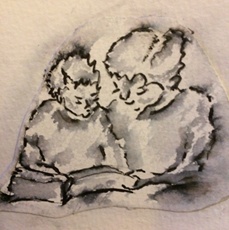 Academic research estimates dyslexia in English-speaking countries to be between 5% and 15% of the population but I
believe it to be higher than this: perhaps 20% or more. Access to provision for diagnosing dyslexia depends on where
you live and is poorly funded, at least in the UK. Diagnosing dyslexia in the UK can potentially involve costs to the
particular UK local authority concerned, who may then face providing the necessary educational provision. It is not
surprising then that the word 'dyslexia' is reluctantly used in official documents. Other children are never put forward
for diagnosis, for a variety of reasons, including that some people are very accomplished at hiding their difficulties,
or they do not wish to be labelled and thought of a less able than their classmates.
Academic research estimates dyslexia in English-speaking countries to be between 5% and 15% of the population but I
believe it to be higher than this: perhaps 20% or more. Access to provision for diagnosing dyslexia depends on where
you live and is poorly funded, at least in the UK. Diagnosing dyslexia in the UK can potentially involve costs to the
particular UK local authority concerned, who may then face providing the necessary educational provision. It is not
surprising then that the word 'dyslexia' is reluctantly used in official documents. Other children are never put forward
for diagnosis, for a variety of reasons, including that some people are very accomplished at hiding their difficulties,
or they do not wish to be labelled and thought of a less able than their classmates.
Dyslexia is recorded as being much more prevalent in boys than girls, approximately in a ratio of 3:1 boys to girls.
The exact physical cause of dyslexia is still to be agreed by academics but neuroscience and genetic research are making great advances in identifying its underlying factors. This leads to the hope that in the future there may be an agreement as to what dyslexia actually is: at the moment, there are major disagreements about its characteristics and therefore, its definition.
2. Visual or 'Surface' Dyslexia.
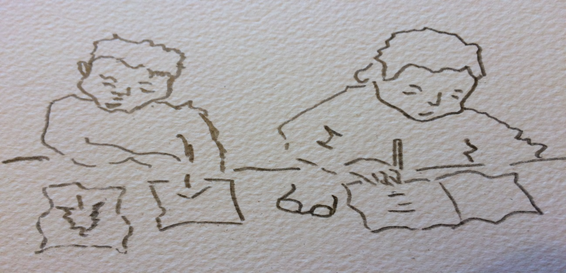 The larger group of people with dyslexia have some form of Phonological Dyslexia. This involves a difficulty with word sounds which gets
in the way of converting letters to sounds, for example when the word big is read by the letters b, i, g being changed to the sounds of
those letters, 'b', 'i', 'g', and those individual sounds are combined into the sound of the word 'big'. This problem is most obvious
when a child is beginning to read because it is the way we acquire the first alphabetic (or 'phonic') rules of reading. This stage of
reading is called the 'partial alphabetic phase'. Individuals with Phonological Dyslexia will jump to reading words as visual patterns,
which is the type of reading strategy that predominates in skilled readers. So, they may be able to become fast readers but because they
cannot revert to using the sounding out method for reading unfamiliar words, they will struggle to acquire new words, especially names
and foreign words.
The larger group of people with dyslexia have some form of Phonological Dyslexia. This involves a difficulty with word sounds which gets
in the way of converting letters to sounds, for example when the word big is read by the letters b, i, g being changed to the sounds of
those letters, 'b', 'i', 'g', and those individual sounds are combined into the sound of the word 'big'. This problem is most obvious
when a child is beginning to read because it is the way we acquire the first alphabetic (or 'phonic') rules of reading. This stage of
reading is called the 'partial alphabetic phase'. Individuals with Phonological Dyslexia will jump to reading words as visual patterns,
which is the type of reading strategy that predominates in skilled readers. So, they may be able to become fast readers but because they
cannot revert to using the sounding out method for reading unfamiliar words, they will struggle to acquire new words, especially names
and foreign words.
The letter and sound links learnt in the partial alphabetic phase of reading development are also important in learning to spell. Indeed, spelling is an enduring problem in dyslexia and becomes more and more of a problem as the assessment of a pupil's work in school becomes more focussed on the written word. There is a knock-on problem from difficulties with spelling single words to organising ideas into sentence structures, and then into paragraphs. The structure of an essay will become much harder for those with dyslexia because the subsidiary skills of spelling and reading have not been completely automated and so require attention that could otherwise have been devoted to the more complex issues of grammar and essay organisation.
Although it has been called Phonological Dyslexia, there are some visual aspects to the literacy difficulties of Phonological Dyslexia, for example b/d confusions are quite common. Because they process the visual world in a slightly different way from typical readers, there may be advantages in being able to mentally rotate images, which may allow them, for example, to do well at certain non-verbal or engineering tasks. Children with this type of dyslexia generally enjoy non-verbal tasks and may show their underlying intellectual abilities through subjects like maths or science or other subjects but are not likely to do well at foreign languages (unless that language is spoken at home).
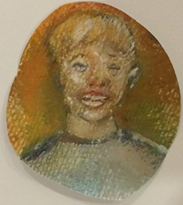 Another kind of developmental dyslexia, called 'Surface Dyslexia' has been identified in reading research but is less well recognised in education.
It is more visual than Phonological Dyslexia. These readers will not have the struggles with reading out word sounds and combining these sounds
into words that individuals with Phonological Dyslexia have. Instead, their speed of reading and spelling may be slowed. This speed of processing
problem seems to be linked to the way they process visual stimuli such as letters, words and bodies of text.
Another kind of developmental dyslexia, called 'Surface Dyslexia' has been identified in reading research but is less well recognised in education.
It is more visual than Phonological Dyslexia. These readers will not have the struggles with reading out word sounds and combining these sounds
into words that individuals with Phonological Dyslexia have. Instead, their speed of reading and spelling may be slowed. This speed of processing
problem seems to be linked to the way they process visual stimuli such as letters, words and bodies of text.
Just as Phonological Dyslexia was first categorised in a clinical setting in people who had experienced brain injury, such as a stroke, so too was Surface Dyslexia. Both kinds of dyslexia have been spotted in children and adults with developmental dyslexia. The type of dyslexia that some call 'Surface Dyslexia' is often, instead, referred to in developmental dyslexia as 'visual' dyslexia or simply as individuals having 'visual problems' with reading. Some academics and educational professionals do not regard this as a form of dyslexia because it does not involve difficulties with word sounds. I believe that this is another reason why the number of children with dyslexia is underestimated.
Owing to their proficiency in phonics, the struggles of children with this 'Surface' or 'visual' dyslexia may not be obvious in the early years at school as they are able to master converting letters to their sounds. They may, however, overuse this way of reading at the expense of reading words holistically and so they may pronounce sounds in words that are exceptions to the letter-sound conversion rules, e.g. pronouncing island as 'izland'.
Where an ability to sound out words in the early stages of reading can lead to good progress in initial reading, it will be later in reading and spelling that it becomes a disadvantage when the slowness of this processing may impede reading fluency and probably interfere with the understanding of text. Therefore, in contrast to those with Phonological Dyslexia, whose difficulties are evident from an early stage of literacy, this second group's dyslexia will not be obvious until typical readers have reached the most skilled stage of reading when reading is fast and visual, rather than phonological.
Children with these visual difficulties may give the appearance of being easily distracted or take longer to process their work and their difficulties will be increased as they go through their schooling as their speed of processing problems will get in the way of automatic processing in reading and spelling. They are likely to be identified at an older age than those with Phonological Dyslexia. Their visual difficulties are likely to require specialist professional intervention by a behavioural optometrist.
Because these children do not experience such great difficulties with the accuracy of word sounds as children with Phonological Dyslexia, they may be verbally able but struggle with certain non-verbal tests. They are likely to succeed better than the Phonological group with learning a foreign language. They may display an aptitude for the visual arts.
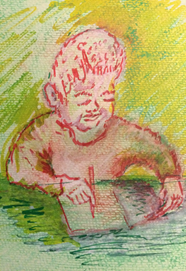 Yes, there is a lot of excellent work in schools and universities to help individuals with dyslexia. There are various structured courses
which assist, particularly with phonics (word sounds) and in acquiring spelling rules. It is, however, an uphill task. Dyslexia can be quite
resistant to tuition. A large degree of improvement is possible in reading, spelling and writing skills but it takes time. It should be recognised
that during the time that they are receiving such specialist tuition, children are likely to fall further behind their classmates,
until they have established effective strategies to cope with the significant challenges that dyslexia presents. It is easy for children to become
disaffected and for there to be lasting damage to their self-esteem. It is important that they are not regarded as 'lazy'. In most cases, it helps
if children understand that there is no blame attached to dyslexia. It also helps the parents, who tend to blame themselves for it.
Yes, there is a lot of excellent work in schools and universities to help individuals with dyslexia. There are various structured courses
which assist, particularly with phonics (word sounds) and in acquiring spelling rules. It is, however, an uphill task. Dyslexia can be quite
resistant to tuition. A large degree of improvement is possible in reading, spelling and writing skills but it takes time. It should be recognised
that during the time that they are receiving such specialist tuition, children are likely to fall further behind their classmates,
until they have established effective strategies to cope with the significant challenges that dyslexia presents. It is easy for children to become
disaffected and for there to be lasting damage to their self-esteem. It is important that they are not regarded as 'lazy'. In most cases, it helps
if children understand that there is no blame attached to dyslexia. It also helps the parents, who tend to blame themselves for it.
Children who exhibit visual deficiencies as part of their dyslexic profiles, would benefit from the expert help of a behavioural optometrist.
The earlier that appropriate extra tuition can be given to children with dyslexia, the better; although there is evidence that before 7 years-of-age, children's visual and auditory processes are in a state of flux and that natural variations in the speed of learning to read and spell may be mistaken for dyslexic tendencies at this age. However, great difficulties in sounding out and blending word sounds in combination with a family history of dyslexia, even before 7 years of age, is likely to be early warning signs of dyslexia.
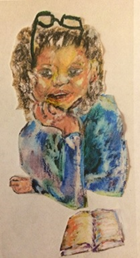 The tests that I am developing are screeners, designed to identify those at most risk of dyslexia, and will not diagnose dyslexia. Appropriate accredited professional assessment is essential for diagnosis, such as from an educational psychologist.
The tests that I am developing are screeners, designed to identify those at most risk of dyslexia, and will not diagnose dyslexia. Appropriate accredited professional assessment is essential for diagnosis, such as from an educational psychologist.
The Literacy Indicator Test (LIT) is the first of a new generation of screening tests. It is a break-through test, which I believe will be the future for dyslexia testing for all ages, leading to interventions that target improvements in areas of weakness specific to the particular needs of the individual.
Administration: groups, e.g. classes, year groups, etc.
Ages: from 7 years old up to adulthood.
Welcome to New Level Education
New Level Education aims to bring educational assessment and intervention into the 21st century, to create a New Level of Education through developing the next generation of computerised educational tests for literacy and dyslexia.What is Dyslexia?
Dyslexia is a challenge that inhibits people from learning to read and spell accurately and fluently. The predisposition to developmental dyslexia is present from birth, as it has genetic and neurological origins. In other words, dyslexia has physical causes.
How common is Dyslexia?
Dyslexia is surprisingly common and often goes unrecognised when individuals with it are wrongly labelled as 'lazy' or 'unintelligent' or 'not academic'. The reasons why they are wrongly categorised in this way are social, not scientific or medical.
 Academic research estimates dyslexia in English-speaking countries to be between 5% and 15% of the population but I
believe it to be higher than this: perhaps 20% or more. Access to provision for diagnosing dyslexia depends on where
you live and is poorly funded, at least in the UK. Diagnosing dyslexia in the UK can potentially involve costs to the
particular UK local authority concerned, who may then face providing the necessary educational provision. It is not
surprising then that the word 'dyslexia' is reluctantly used in official documents. Other children are never put forward
for diagnosis, for a variety of reasons, including that some people are very accomplished at hiding their difficulties,
or they do not wish to be labelled and thought of a less able than their classmates.
Academic research estimates dyslexia in English-speaking countries to be between 5% and 15% of the population but I
believe it to be higher than this: perhaps 20% or more. Access to provision for diagnosing dyslexia depends on where
you live and is poorly funded, at least in the UK. Diagnosing dyslexia in the UK can potentially involve costs to the
particular UK local authority concerned, who may then face providing the necessary educational provision. It is not
surprising then that the word 'dyslexia' is reluctantly used in official documents. Other children are never put forward
for diagnosis, for a variety of reasons, including that some people are very accomplished at hiding their difficulties,
or they do not wish to be labelled and thought of a less able than their classmates.Dyslexia is recorded as being much more prevalent in boys than girls, approximately in a ratio of 3:1 boys to girls.
What are the Causes of Dyslexia?
The exact physical cause of dyslexia is still to be agreed by academics but neuroscience and genetic research are making great advances in identifying its underlying factors. This leads to the hope that in the future there may be an agreement as to what dyslexia actually is: at the moment, there are major disagreements about its characteristics and therefore, its definition.
Types of Dyslexia
Dyslexia, or Developmental Dyslexia to give it its full title, is not just one thing. A bit like the way two people with the 'flu can have different symptoms, so people with dyslexia have different characteristics. There are two major 'types' of developmental dyslexia: 1. Phonological2. Visual or 'Surface' Dyslexia.
Phonological Dyslexia
 The larger group of people with dyslexia have some form of Phonological Dyslexia. This involves a difficulty with word sounds which gets
in the way of converting letters to sounds, for example when the word big is read by the letters b, i, g being changed to the sounds of
those letters, 'b', 'i', 'g', and those individual sounds are combined into the sound of the word 'big'. This problem is most obvious
when a child is beginning to read because it is the way we acquire the first alphabetic (or 'phonic') rules of reading. This stage of
reading is called the 'partial alphabetic phase'. Individuals with Phonological Dyslexia will jump to reading words as visual patterns,
which is the type of reading strategy that predominates in skilled readers. So, they may be able to become fast readers but because they
cannot revert to using the sounding out method for reading unfamiliar words, they will struggle to acquire new words, especially names
and foreign words.
The larger group of people with dyslexia have some form of Phonological Dyslexia. This involves a difficulty with word sounds which gets
in the way of converting letters to sounds, for example when the word big is read by the letters b, i, g being changed to the sounds of
those letters, 'b', 'i', 'g', and those individual sounds are combined into the sound of the word 'big'. This problem is most obvious
when a child is beginning to read because it is the way we acquire the first alphabetic (or 'phonic') rules of reading. This stage of
reading is called the 'partial alphabetic phase'. Individuals with Phonological Dyslexia will jump to reading words as visual patterns,
which is the type of reading strategy that predominates in skilled readers. So, they may be able to become fast readers but because they
cannot revert to using the sounding out method for reading unfamiliar words, they will struggle to acquire new words, especially names
and foreign words.The letter and sound links learnt in the partial alphabetic phase of reading development are also important in learning to spell. Indeed, spelling is an enduring problem in dyslexia and becomes more and more of a problem as the assessment of a pupil's work in school becomes more focussed on the written word. There is a knock-on problem from difficulties with spelling single words to organising ideas into sentence structures, and then into paragraphs. The structure of an essay will become much harder for those with dyslexia because the subsidiary skills of spelling and reading have not been completely automated and so require attention that could otherwise have been devoted to the more complex issues of grammar and essay organisation.
Although it has been called Phonological Dyslexia, there are some visual aspects to the literacy difficulties of Phonological Dyslexia, for example b/d confusions are quite common. Because they process the visual world in a slightly different way from typical readers, there may be advantages in being able to mentally rotate images, which may allow them, for example, to do well at certain non-verbal or engineering tasks. Children with this type of dyslexia generally enjoy non-verbal tasks and may show their underlying intellectual abilities through subjects like maths or science or other subjects but are not likely to do well at foreign languages (unless that language is spoken at home).
'Surface' or 'Visual' Dyslexia
 Another kind of developmental dyslexia, called 'Surface Dyslexia' has been identified in reading research but is less well recognised in education.
It is more visual than Phonological Dyslexia. These readers will not have the struggles with reading out word sounds and combining these sounds
into words that individuals with Phonological Dyslexia have. Instead, their speed of reading and spelling may be slowed. This speed of processing
problem seems to be linked to the way they process visual stimuli such as letters, words and bodies of text.
Another kind of developmental dyslexia, called 'Surface Dyslexia' has been identified in reading research but is less well recognised in education.
It is more visual than Phonological Dyslexia. These readers will not have the struggles with reading out word sounds and combining these sounds
into words that individuals with Phonological Dyslexia have. Instead, their speed of reading and spelling may be slowed. This speed of processing
problem seems to be linked to the way they process visual stimuli such as letters, words and bodies of text.Just as Phonological Dyslexia was first categorised in a clinical setting in people who had experienced brain injury, such as a stroke, so too was Surface Dyslexia. Both kinds of dyslexia have been spotted in children and adults with developmental dyslexia. The type of dyslexia that some call 'Surface Dyslexia' is often, instead, referred to in developmental dyslexia as 'visual' dyslexia or simply as individuals having 'visual problems' with reading. Some academics and educational professionals do not regard this as a form of dyslexia because it does not involve difficulties with word sounds. I believe that this is another reason why the number of children with dyslexia is underestimated.
Owing to their proficiency in phonics, the struggles of children with this 'Surface' or 'visual' dyslexia may not be obvious in the early years at school as they are able to master converting letters to their sounds. They may, however, overuse this way of reading at the expense of reading words holistically and so they may pronounce sounds in words that are exceptions to the letter-sound conversion rules, e.g. pronouncing island as 'izland'.
Where an ability to sound out words in the early stages of reading can lead to good progress in initial reading, it will be later in reading and spelling that it becomes a disadvantage when the slowness of this processing may impede reading fluency and probably interfere with the understanding of text. Therefore, in contrast to those with Phonological Dyslexia, whose difficulties are evident from an early stage of literacy, this second group's dyslexia will not be obvious until typical readers have reached the most skilled stage of reading when reading is fast and visual, rather than phonological.
Children with these visual difficulties may give the appearance of being easily distracted or take longer to process their work and their difficulties will be increased as they go through their schooling as their speed of processing problems will get in the way of automatic processing in reading and spelling. They are likely to be identified at an older age than those with Phonological Dyslexia. Their visual difficulties are likely to require specialist professional intervention by a behavioural optometrist.
Because these children do not experience such great difficulties with the accuracy of word sounds as children with Phonological Dyslexia, they may be verbally able but struggle with certain non-verbal tests. They are likely to succeed better than the Phonological group with learning a foreign language. They may display an aptitude for the visual arts.
Can Anything be Done to Help Someone with Dyslexia?
 Yes, there is a lot of excellent work in schools and universities to help individuals with dyslexia. There are various structured courses
which assist, particularly with phonics (word sounds) and in acquiring spelling rules. It is, however, an uphill task. Dyslexia can be quite
resistant to tuition. A large degree of improvement is possible in reading, spelling and writing skills but it takes time. It should be recognised
that during the time that they are receiving such specialist tuition, children are likely to fall further behind their classmates,
until they have established effective strategies to cope with the significant challenges that dyslexia presents. It is easy for children to become
disaffected and for there to be lasting damage to their self-esteem. It is important that they are not regarded as 'lazy'. In most cases, it helps
if children understand that there is no blame attached to dyslexia. It also helps the parents, who tend to blame themselves for it.
Yes, there is a lot of excellent work in schools and universities to help individuals with dyslexia. There are various structured courses
which assist, particularly with phonics (word sounds) and in acquiring spelling rules. It is, however, an uphill task. Dyslexia can be quite
resistant to tuition. A large degree of improvement is possible in reading, spelling and writing skills but it takes time. It should be recognised
that during the time that they are receiving such specialist tuition, children are likely to fall further behind their classmates,
until they have established effective strategies to cope with the significant challenges that dyslexia presents. It is easy for children to become
disaffected and for there to be lasting damage to their self-esteem. It is important that they are not regarded as 'lazy'. In most cases, it helps
if children understand that there is no blame attached to dyslexia. It also helps the parents, who tend to blame themselves for it.Children who exhibit visual deficiencies as part of their dyslexic profiles, would benefit from the expert help of a behavioural optometrist.
The earlier that appropriate extra tuition can be given to children with dyslexia, the better; although there is evidence that before 7 years-of-age, children's visual and auditory processes are in a state of flux and that natural variations in the speed of learning to read and spell may be mistaken for dyslexic tendencies at this age. However, great difficulties in sounding out and blending word sounds in combination with a family history of dyslexia, even before 7 years of age, is likely to be early warning signs of dyslexia.
New Level Education Tests
 The tests that I am developing are screeners, designed to identify those at most risk of dyslexia, and will not diagnose dyslexia. Appropriate accredited professional assessment is essential for diagnosis, such as from an educational psychologist.
The tests that I am developing are screeners, designed to identify those at most risk of dyslexia, and will not diagnose dyslexia. Appropriate accredited professional assessment is essential for diagnosis, such as from an educational psychologist.The Literacy Indicator Test (LIT) is the first of a new generation of screening tests. It is a break-through test, which I believe will be the future for dyslexia testing for all ages, leading to interventions that target improvements in areas of weakness specific to the particular needs of the individual.
Administration: groups, e.g. classes, year groups, etc.
Ages: from 7 years old up to adulthood.
